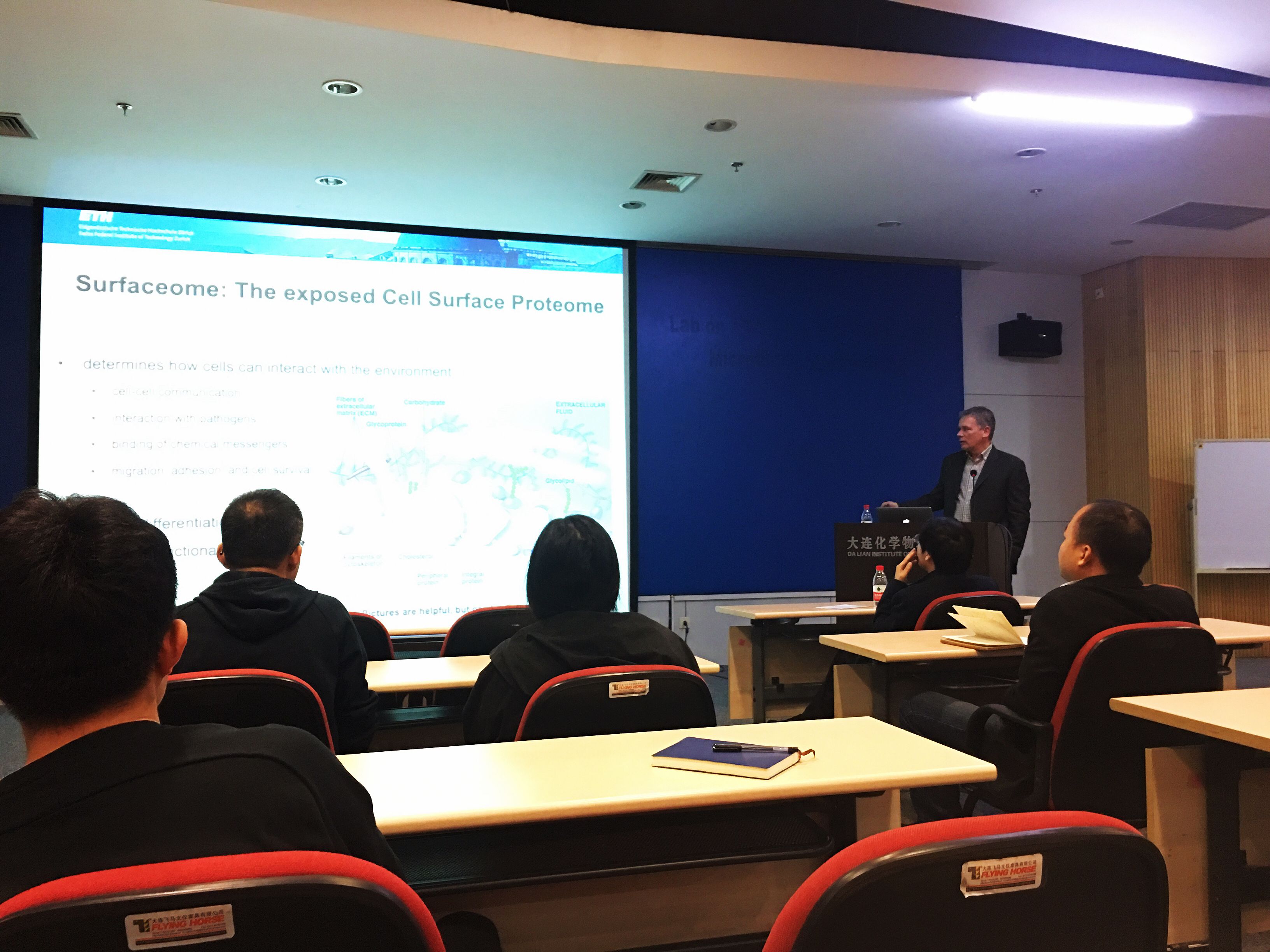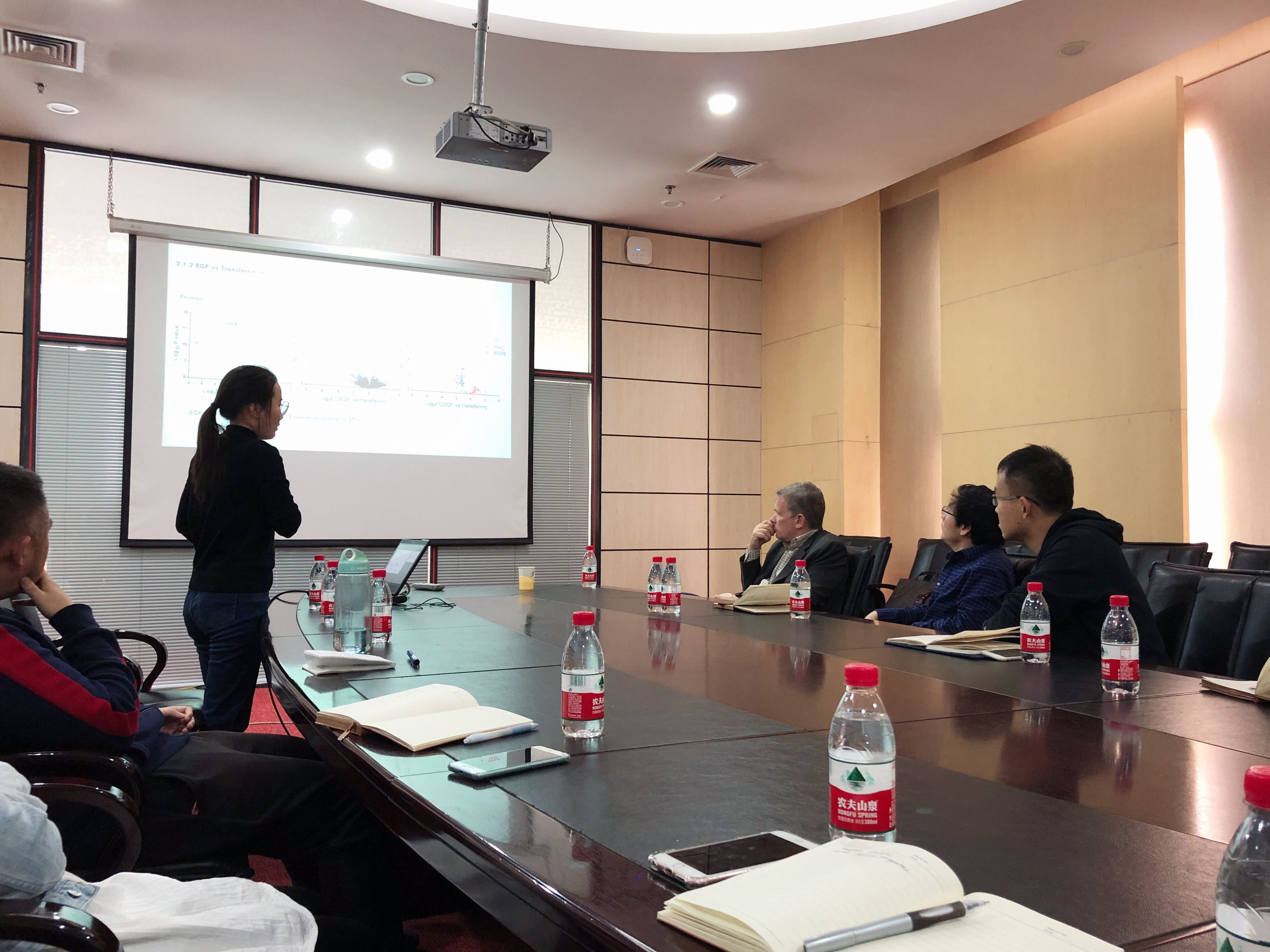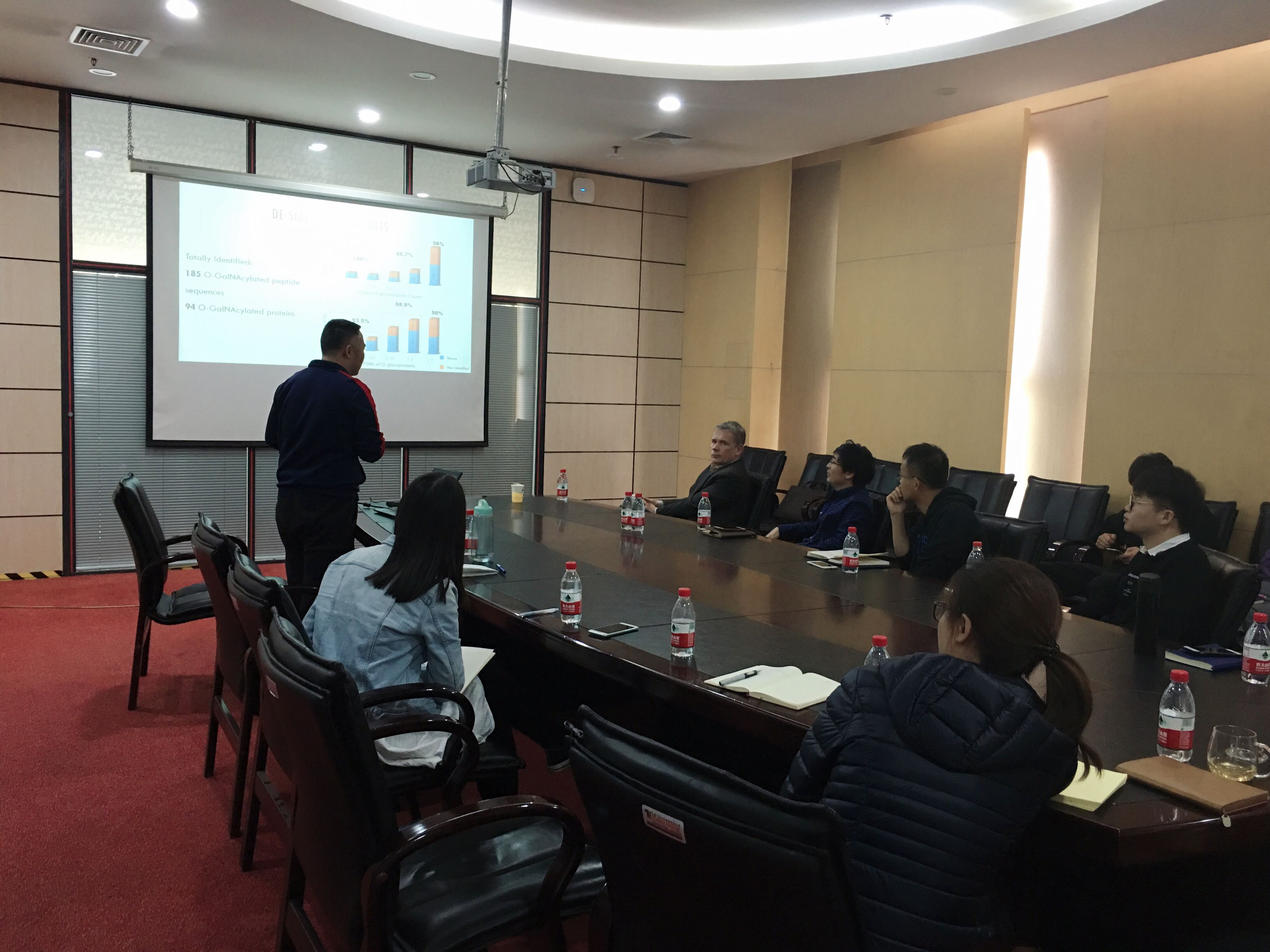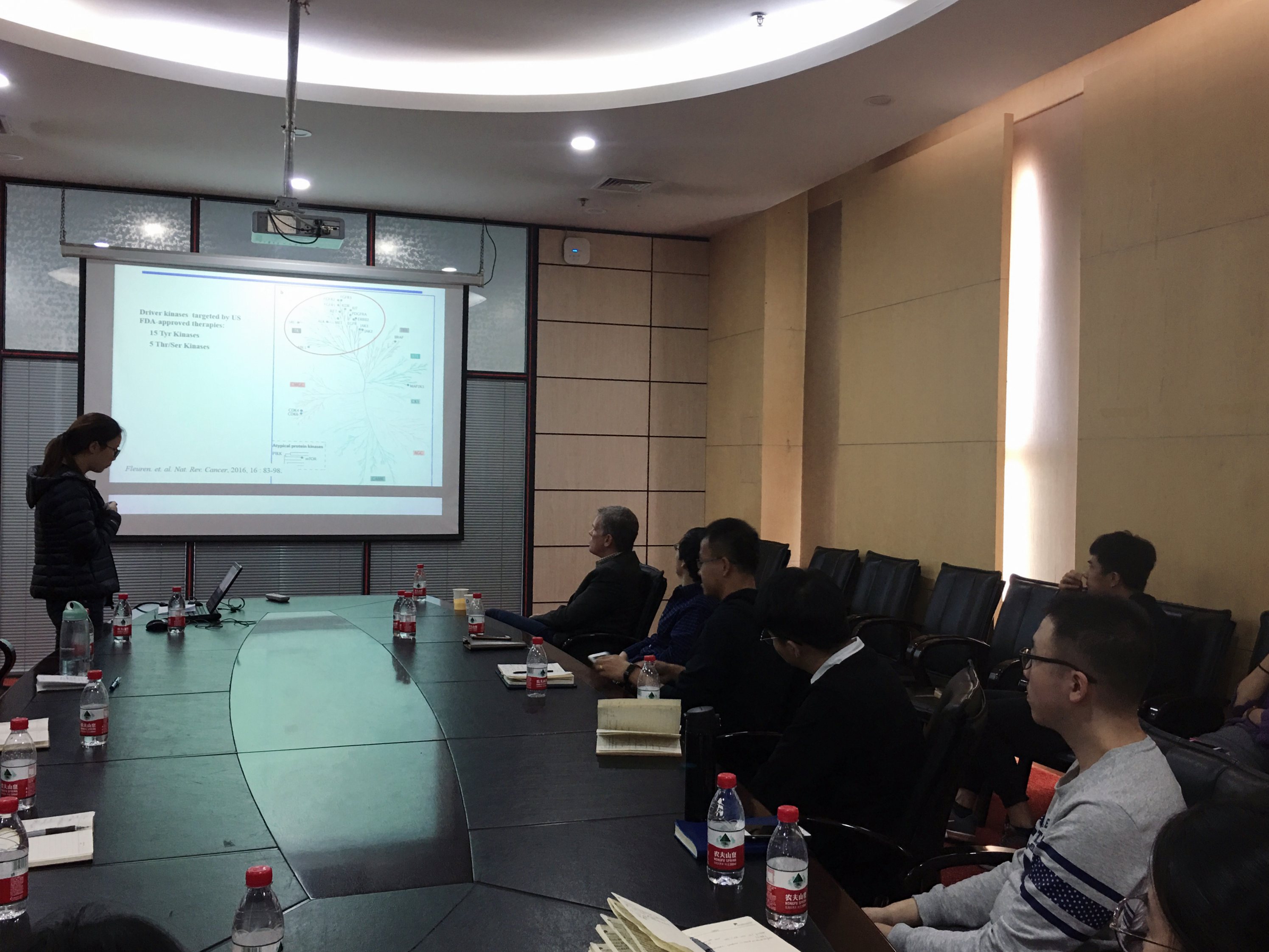2018年11月19日上午,应我组组长叶明亮研究员的邀请,瑞士苏黎世大学(Institute of Molecular Systems Biology & Department of Health Sciences and Technology, ETH Zurich, Switzerland)的Bernd Wollsicheid 教授在生物技术部学术报告厅作了题为”The in silico Human Surfaceome & Technologies for the Elucidation of the Surfaceome Nanoscale Organization”的学术报告。生物技术部50多名科研人员及研究生听取了报告。

Bernd Wollsicheid 教授首先介绍了其2009年建立的细胞表面蛋白富集新方法-细胞表面蛋白捕获技术(Cell surface capture technology,doi:10.1038/nbt.1532.),该方法可实现细胞表面蛋白的高特异性富集(~90%)。该团队接着将方法应用于41种人和31种小鼠细胞系,建立了一个具有2886个高可信度的细胞表面蛋白的数据库(http://wlab.ethz.ch/cspa/)。随后Bernd教授介绍了其团队开发的细胞表面蛋白分析的两种软件-POTTER和SURFY, POTTER是一个极好用的蛋白全方位展示工具(http://wlab.ethz.ch/protter/),SURFY为该团队今年开发的细胞表面蛋白预测工具,即可以对蛋白是否为细胞表面蛋白进行预测,其对上述2886个细胞表面蛋白的预测准确率可以达到93.5%(http://wlab.ethz.ch/surfaceome/)。Bernd教授还重点介绍了其实验室发展的基于配体的受体捕获技术(Ligand-based receptor capture,LRC),通过该团队设计的三功能试剂,即一代TRICEPS和二代HATRIC,可以实现特异性的对EGF, transferrin, trastuzumab以及病毒等配体相应细胞表面受体的检测。目前,该团队正尝试利用细胞表面蛋白质组学的知识用探针技术来选择性的杀死肿瘤细胞。未来,随着HATRIC检测灵敏度的提高,很有可能可以实现对生物或临床样品中翻译后修饰的受体的分析。

11月19日下午,我组部分研究生向Bernd Wollsicheid 教授介绍了各自的研究课题,并针对课题中的具体问题,同Bernd教授进行了详细的讨论。




Bernd Wollsicheid 教授本次来我组进行的学术交流不仅向我们展示了其课题组前沿的研究内容,同时也对我组相关科研人员的课题给与了中肯的建议,使大家受益匪浅。
报告人简介:
Bernd Wollscheid is a Professor for Chemical and Systems Biology at the Swiss Federal Institute of Technology in Zürich, Switzerland. After studying chemistry in Freiburg and Boston he obtained his PhD in Molecular Immunology from the Max-Planck Institute for Immunobiology. His postdoctoral research took him to the Institute of Systems Biology in Seattle where he developed and applied chemoproteomic technologies to elucidate cell surface protein biology. As a group leader and PI at the Institute for Molecular Systems Biology at ETH Zurich he developed a research program focusing on a systems biology understanding of the cell surface as a cellular information gateway and on the identification of cell surface glycoproteins as diagnostic and therapeutic clinical targets. Now at the Department of Health Sciences and Technology of ETH his team developed and applied chemoproteomic technologies which enable the decoding of the extracellular interactome.